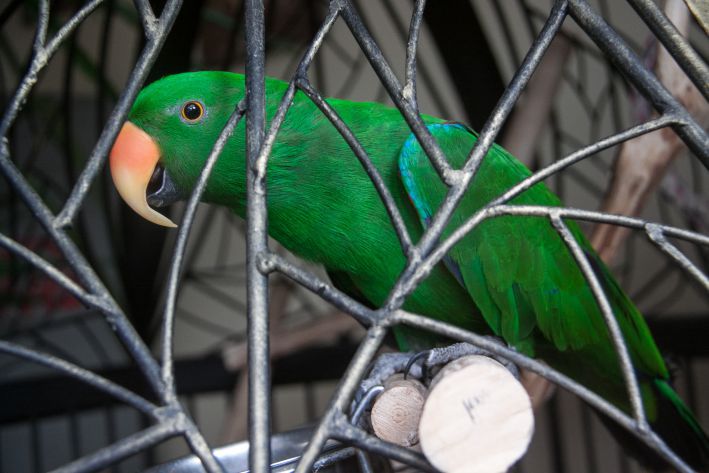Parrots are highly intelligent and learnable and can imitate human speech and other sounds.
How to communicate with a parrot and teach it to speak?
There are several rules and recommendations that will help you communicate with your parrot and teach it to speak.
Choose the right parrot for training
Not all parrot species are equally good at talking or imitating sounds. The most talkative parrots are considered to be the grey parrot, macaw, amazon, cockatiel, lovebird and budgerigar.
Also consider the character and temperament of the parrot: some parrots are more friendly and sociable, others are more independent and secretive.

Choose a suitable name for your parrot
The name should be short, sonorous and easy to pronounce. It is also desirable that the name matches the sex and color of the parrot.
For example, if you have a blue budgie, you can name it Blue, Light Blue or Azure. If you have a green grey parrot, you can name it Green, Lime or Kiwi.
Interact with your parrot regularly and in a friendly manner.
The parrot should feel comfortable and safe in your presence. Talk to the parrot in a calm and gentle voice, reward it for any signs of interest or trust in you.
Do not yell at your parrot or make any sudden movements near it. This may frighten or anger the parrot and discourage it from interacting with you.
Teach your parrot simple words and phrases
Start by repeating your parrot's name each time you speak to it.
Then add other words or phrases that you want to teach your parrot. For example, you can say “Hello,” “Bye,” “How are you?”, “Good night,” etc.
Speak clearly and distinctly, emphasizing each word. Repeat words or phrases several times in a row with short pauses between them.
Watch your parrot's reaction: if it shows interest or tries to imitate your words, then reward it and give it a treat or a toy. If it shows no interest or is distracted by other sounds, then try changing the topic or returning to training later.
Respect your parrot's individuality and mood.
Not all parrots learn to speak or imitate sounds equally well or quickly. Some parrots can learn dozens of words and phrases, others only a few or none at all.
You shouldn't compare your parrot with others or force training on it if it doesn't want to or can't. Every parrot has its own character, temperament and abilities. The main thing is to love and appreciate your parrot for what it is.
Enjoy interacting with your parrot and develop its talents.
Communicating with a parrot is not only learning, but also mutual pleasure and entertainment.
A parrot can not only talk or imitate sounds, but also sing, dance, play hide-and-seek, solve puzzles and much more.
Try different types of games and activities with your parrot and find out what he likes and is most interested in. This way, you can strengthen your bond with your parrot and make his life brighter and happier.
It was previously reported how to understand that a rabbit is sick.








